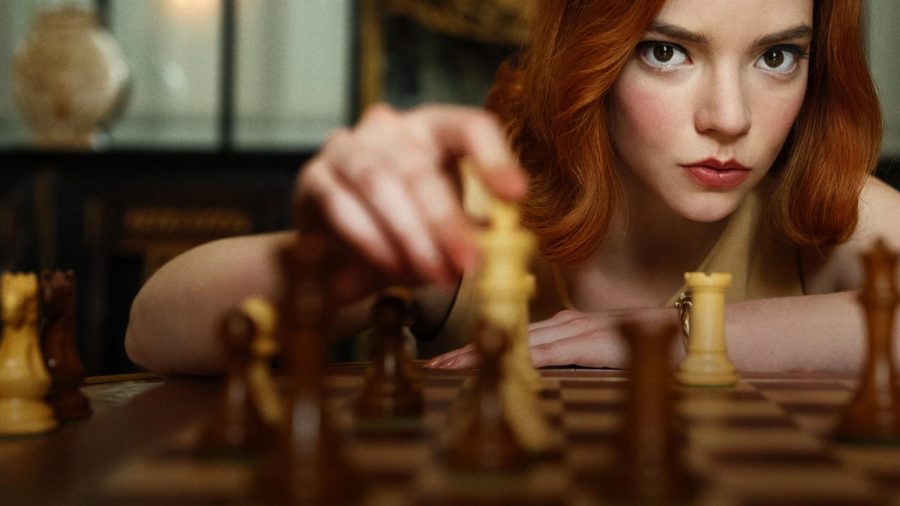‘The Queen’s Gambit:’ An Irresistible Chess Thriller Worth the Watch
Anya Taylor-Joy starring in “The Queen’s Gambit” (courtesy Netflix).
January 29, 2021
It has been joked about on social media, especially with new releases, that Netflix Originals tend to be hit-or-miss. A show may be so bad that you have to watch it, as I would argue about “The Kissing Booth” series or Noah Centineo’s “Swiped.” However, “The Queen’s Gambit” is one of Netflix’s most recent original series and one that fits the former category of being a hit. Following its Oct. 23 release on the platform, this drama miniseries became the most-watched of its genre in only four weeks.
Synopsis
“The Queen’s Gambit” tells the story of Beth Harmon (Anya Taylor-Joy), an orphaned chess prodigy who rises to international acclaim while dealing with her personal experiences of trauma, loss and substance addiction. Taught chess by the orphanage’s janitor, Mr. Shaibel, Harmon begins a competitive journey towards the title of grandmaster. Along the way, she receives help from the best — a well-meaning chess theorist and former Kentucky state chess champion, Harry Beltik; a strategic and challenging on-and-off-again opponent, Benny Watts; and romantic chess enthusiast and journalist, D. L. Townes.
The concept of addiction and mental processes arise frequently in this show. Set in the 1950s, it wasn’t uncommon for girls in orphanages like Harmon to be dosed daily with tranquilizer pills — reinforcing addiction at an incredibly young age. The show walks a narrow line with this discussion because it is through the drug abuse that Harmon can visualize chess games and moves, memorizing and practicing every step imagined on her ceiling each night. Beth’s adopted mother Alma, who joins Beth in traveling from tournament to tournament, suffers from another destructive addiction in alcoholism.
One of the biggest draws of the show is how expertly and intimately it follows the intricacies of chess — as a sport, strategy and lifestyle. How these experts can carry intense conversations, recall various games, styles and specific moves throughout history is astonishing. The entire show exudes an air of intelligence and heightened fashion on the surface, with no fear of diving into the dirty underbelly of abuse and trauma.
Behind the Scenes
Casting Taylor-Joy in the starring role was a strong choice — her dramatic subtlety beneath a sly poker face and honest, raw emotions in the heartbreaking moments of Beth Harmon’s life are captivating. Both Beltik (Harry Melling) and Watts (Thomas Brodie-Sangster) are also excellent foils to Harmon’s removed and reserved demeanor. Beltik challenges her softly, a longing, vulnerability he exemplifies so well, whereas Watts eggs her on in a tense and teasing manner — making his character more appealing.
As well as the show is written and cast, I also want to call attention to the expert design team behind the episodes. Each tournament — from Cincinnati to Vegas, Mexico City, Paris and Moscow — is portrayed in radically different ways. In terms of color, light, space and tone, every scene carries such a depth of setting and circumstance that you can’t help but be intrigued. My favorite sequence is in the third episode, “Doubled Pawns,” where Harmon plays — and loses — to Watts for the first time. The shots are edited together in a sweeping and intense montage of sharp moves across the board and steely glares between the two from across the table.
If you are one of the few who have been holding out on watching “The Queen’s Gambit,” I encourage you to go for it. It made me want to enter their world, understand the complexities of knowledge beyond my reach and find catharsis in playing chess game after chess game.








